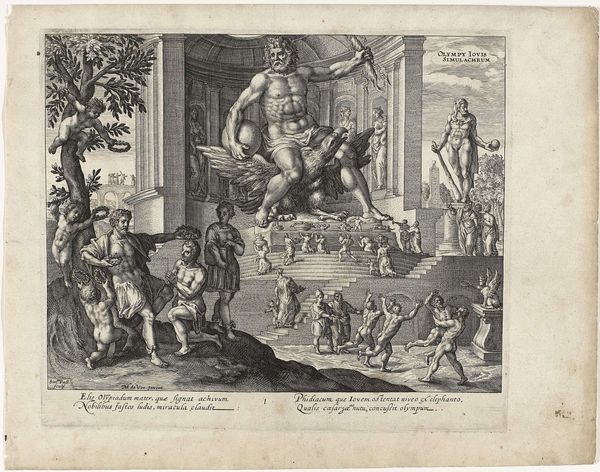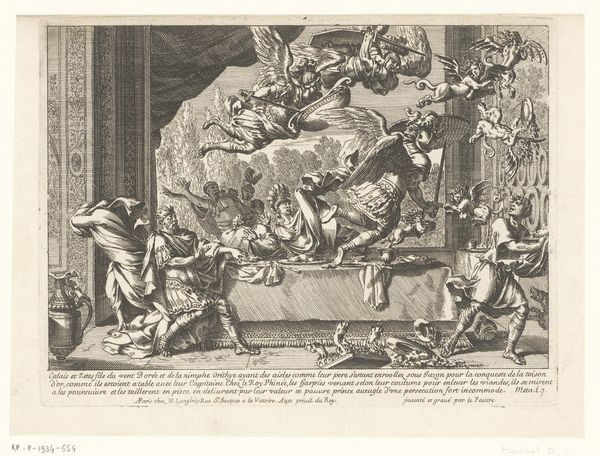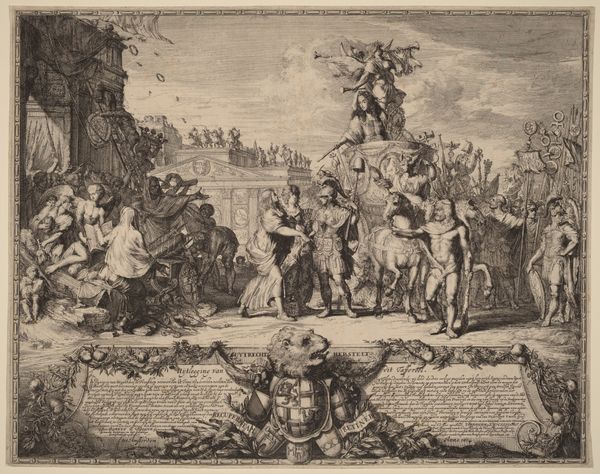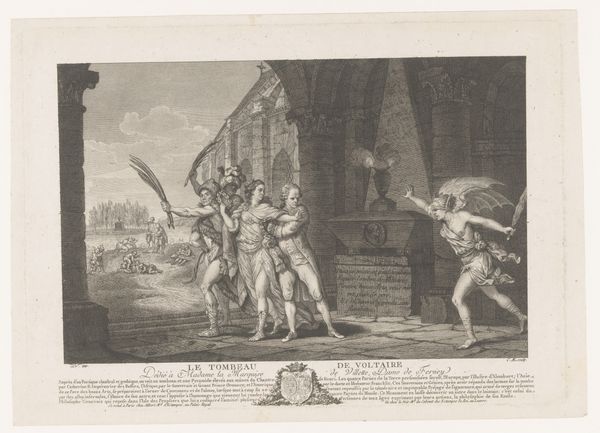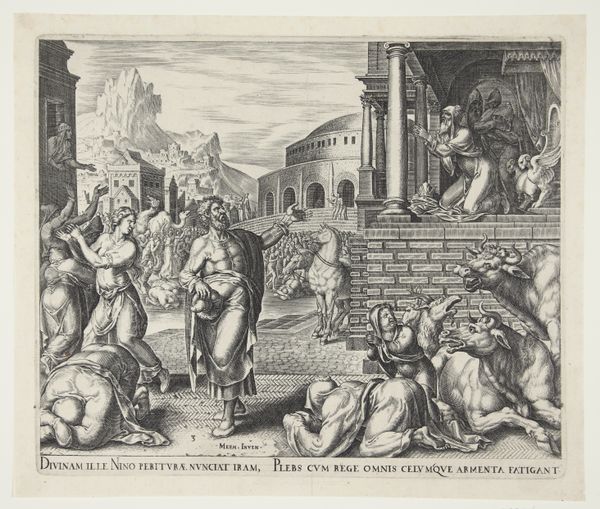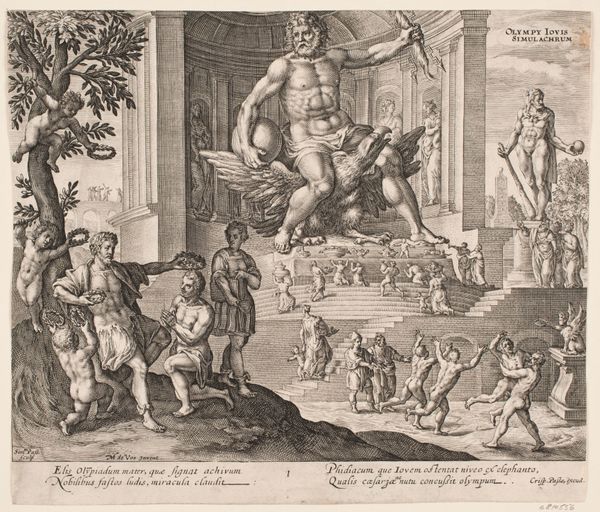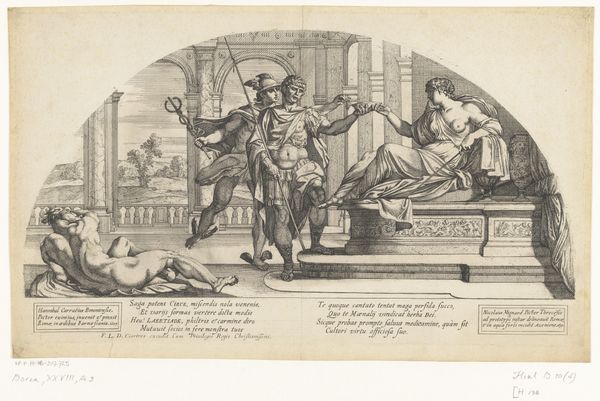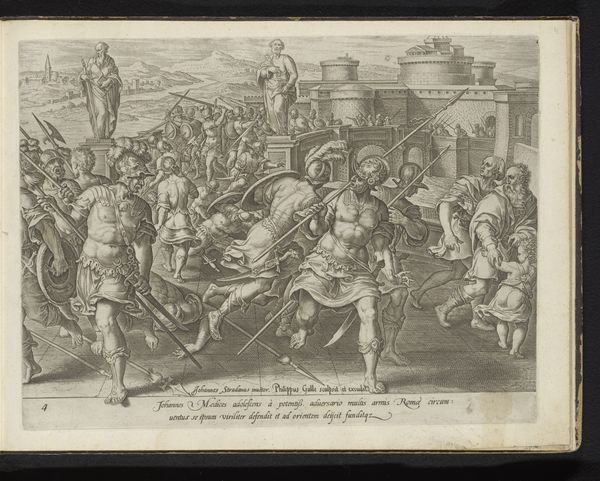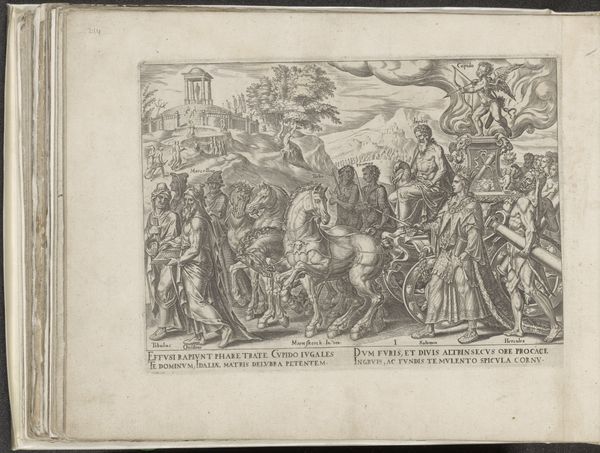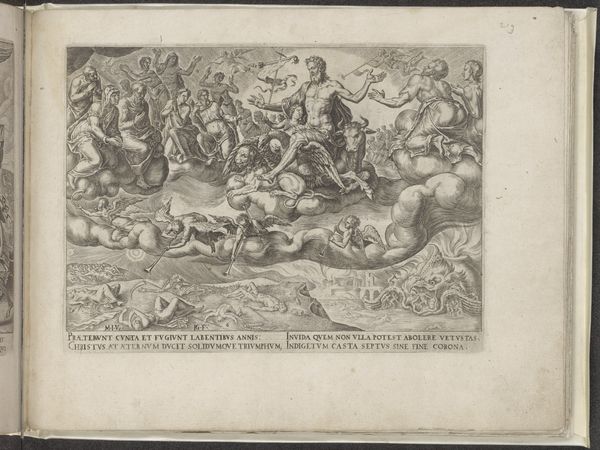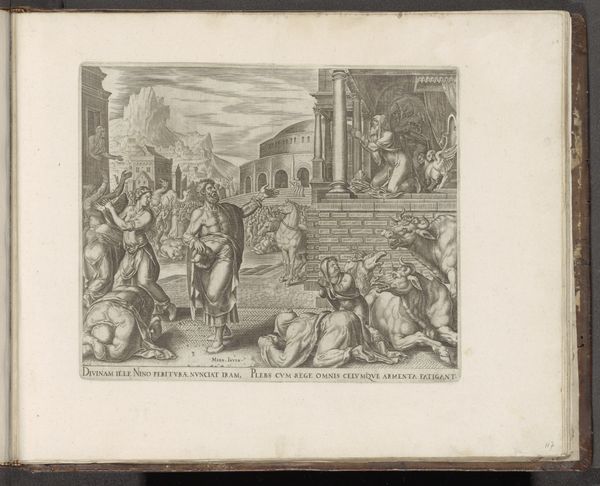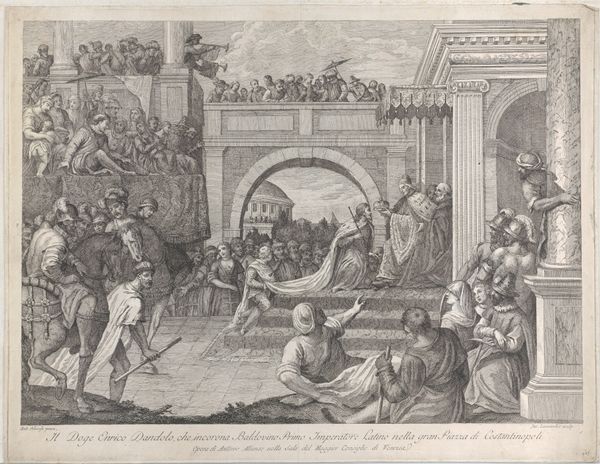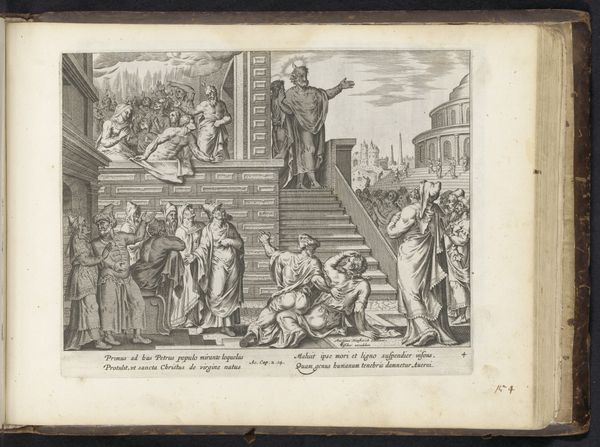
print, engraving
#
garden
#
allegory
#
baroque
# print
#
landscape
#
figuration
#
history-painting
#
engraving
Dimensions: height 326 mm, width 445 mm
Copyright: Rijks Museum: Open Domain
Arnold van Westerhout made this print, titled "Tuin van de Hesperiden," sometime between 1651 and 1725. The image is packed with classical references, and invites us to consider the social and cultural function of art. It shows Hercules in the Garden of the Hesperides, from Greek myth. The Hesperides were nymphs who guarded a garden with golden apples. This scene appears to depict the eleventh labor of Hercules, who was tasked with stealing the golden apples from the garden. Note the cherubs in the top portion of the print, which add an element of Christian symbolism to a classical scene. Van Westerhout made this print in Rome, a place that had long been a center of artistic patronage. As in other European cities, wealthy families such as the Cerri family, to whom this image is dedicated, used art to increase their social standing. Historians can study such images to explore the complex politics of patronage in this period. By researching the families that commissioned artwork and the artists who made it, we can better understand the social and cultural context of the time.
Comments
No comments
Be the first to comment and join the conversation on the ultimate creative platform.
